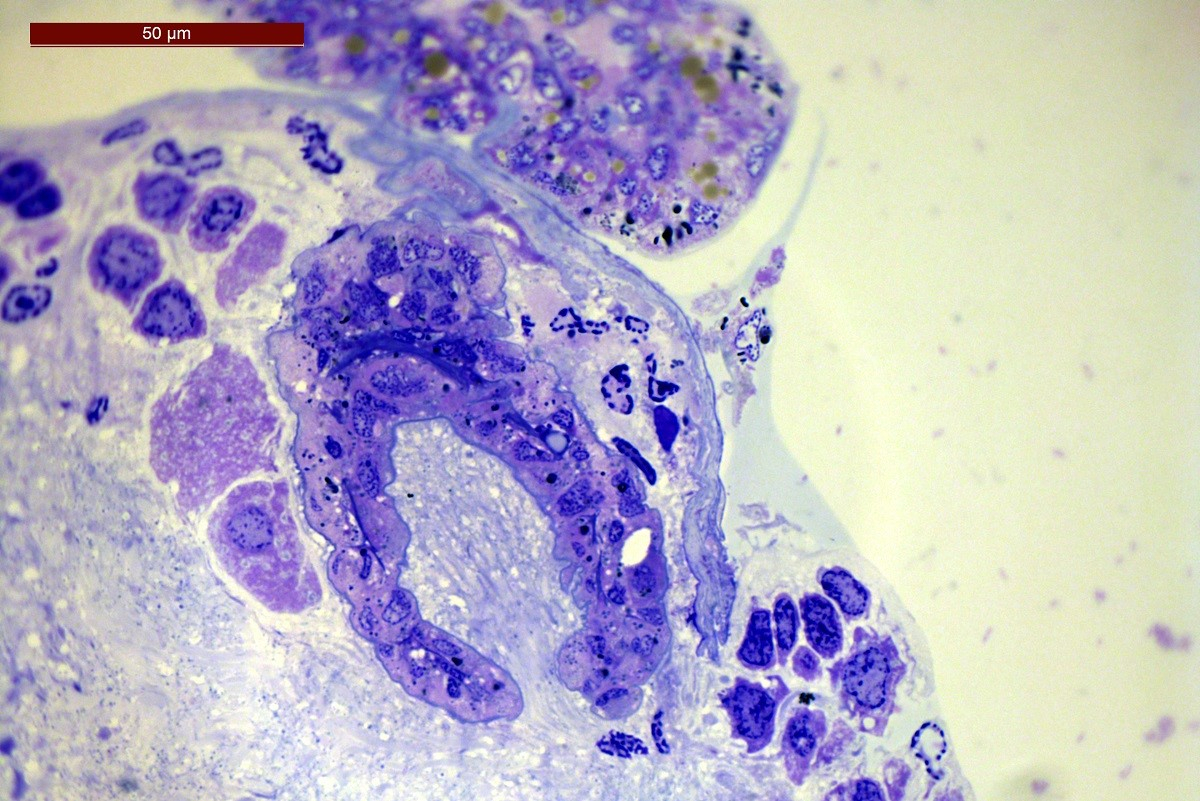Scientists at St Petersburg University find out how crustaceans turn their relatives into zombie

Researchers from St Petersburg University and the Zoological Institute of the Russian Academy of Sciences have studied two rhizocephalan species. They found that these parasites can literally grow into the alien nervous system to control their hosts – other crustaceans. It is known that ‘manipulators’ can cause feminisation in male crabs, forcing them to behave like pregnant females. The secret is that rhizocephalan species might have learned to control the production of serotonin in their victims’ organisms.
The research findings have been published in Scientific Reports
‘When it comes to crustaceans, people usually imagine crayfish or shrimps,’ explains Aleksei Miroliubov, the lead author of the article and a researcher at St Petersburg University. ‘In fact, there are a huge number of them, including a large number of parasitic forms. We examined rhizocephalans – relatives of goose barnacles and acorn barnacles – which are completely unlike ordinary shellfish. They live inside other crustaceans, so their body is more like a kind of loofah that permeates the entire host’s body, including its nervous system.’
As Aleksei Miroliubov notes, it is rhizocephalans that might be one of the most advanced parasites on the planet. The researchers studied two species: the White Sea Peltogaster paguri and the Far Eastern Peltogasterella gracilis. They found out that these species are able to form a parasite-host interface: in the brain of the ‘victim’ appears almost a ‘flight control centre’ – a goblet-shaped organ – which, as the scientists suggest, excretes into the neural tissue substances that help control the host.
Sometimes these parasites occupy up to 50% of the host's neural tissue – this is a very large volume. In this case, the host does not lose any vital functions. Most often, parasites destroy something in the host's body in order to cause some or other change in behaviour. These species act very gently and delicately, literally overmastering the will of the host to themselves.
Aleksei Miroliubov, a researcher at St Petersburg University
‘It is known that crabs and hermit crabs are subject to ‘turning into zombies’: the parasite makes them (and even males) behave like pregnant females,’ explained Aleksei Miroliubov. ‘The situation is that in the place where crabs usually carry eggs, the reproductive system of the parasite is located: its own eggs. To keep them safe, the parasite ‘convinces’ the host to take care of them as if they were its own eggs, be less aggressive, and eat well. We assume that it can change the composition of neurotransmitters – substances by which nerve impulses are transmitted – in the host's nervous system. For example, it is known that an increase in the amount of serotonin in animals is precisely associated with an increase in appetite and a decrease in aggression.’
The research is supported by Grant No 18-34-00727\18 from the Russian Foundation for Basic Research.
The next question that the researchers will try to find answers to is related to how exactly the parasite manages to overcome the ganglion envelope, which protects the neural tissue. Additionally, the rhizocephalan somehow makes the host's peripheral neural fibres literally grow around its own body. The scientists say that this is an amazing phenomenon because examples of the occurrence of new forms in the neural tissue of mature animals are rarely found in nature. Studying these mechanisms in the future will probably help to understand how it is possible to restore the neural tissue in the human body.
The research has been carried out using the resource centre equipment of the Research Park of St Petersburg University: the Centre for Microscopy and Microanalysis; the Chromas Core Facility; and the Centre for Molecular and Cell Technologies.

